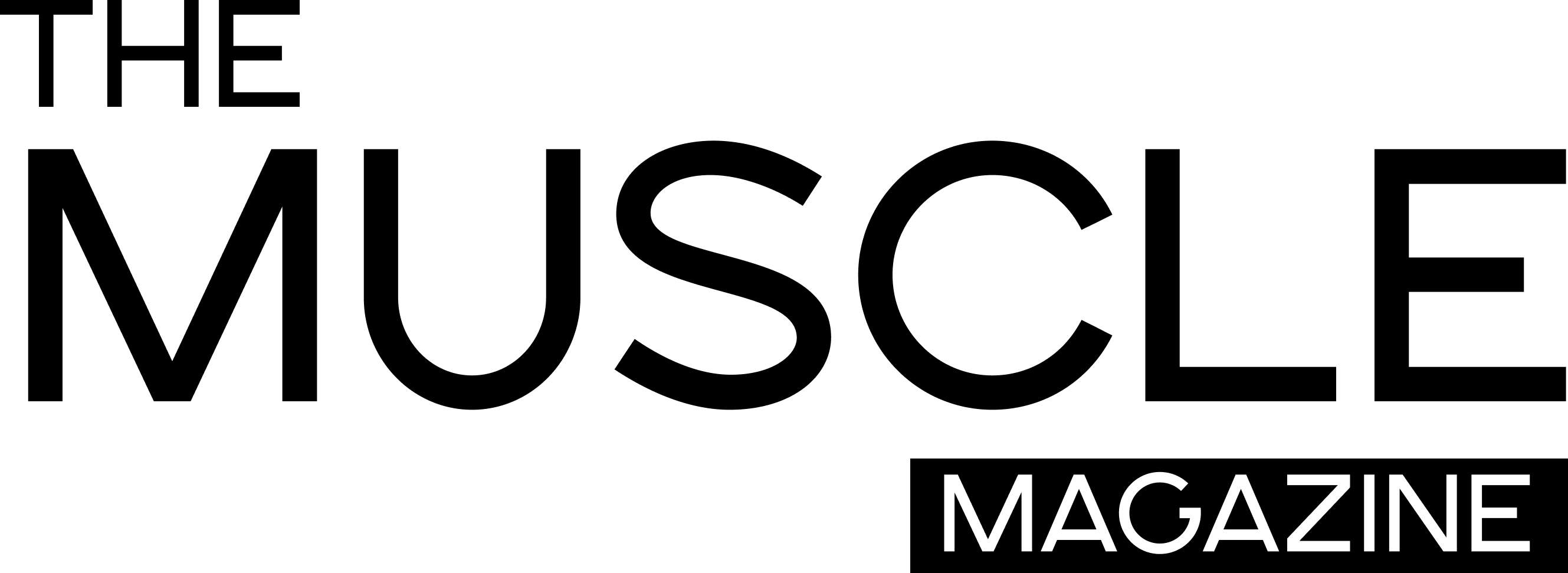In an era of heightened health consciousness, the natural products industry has experienced a substantial surge. Consumers everywhere are actively seeking out natural solutions, and the competition in the retail of natural products has reached a feverish peak. Online platforms have taken note, selling more products than ever while expanding their education and awareness programs.
Yet, independent retailers maintain a strong foothold through their ability to educate consumers and serve as the front line of natural wellness. For these stores, the quality of the products offered is just the beginning. A crucial aspect that can significantly impact their success is the customer experience.
The customer experience is the sum of all interactions a customer has with a business, from the moment they approach the store to their post-purchase reflections. It’s not only about the immediate benefits but also about offering an experience that is unique and memorable. This experience is shaped by the store’s ambiance, the quality and diversity of products, the staff’s knowledge and friendliness, and the overall ease and enjoyment of the shopping journey. It’s clear then that providing a standout customer experience is not just advantageous—it’s imperative.

So where to begin?
From the Road and Parking Lot
Consider the consumer’s journey, which begins before they even enter your store. Evaluate the ease of parking and visibility of the store from the road. A new consumer’s first impression is formed from these initial touchpoints.
Take, for example, the grocery giant Publix, which typically mandates a minimum parking space width of 10 feet, whereas many municipalities allow for parking spots as narrow as 7.5 feet. For Publix, the customer experience starts the moment the customer arrives, even as they first step out of their vehicle.
Curb appeal is as crucial for a retail store as it is for selling a home. A store’s ability to attract customers from the road, and to communicate its values and service offerings to passersby, is paramount. It is your most cost-effective way of reaching new customers and is often more impactful than traditional advertising.
Outside the Front Door
Leverage the power of your store windows. Beyond the quick fixes of posters and promotional materials provided by brands, your windows can (and should) showcase the unique values that differentiate your brand. This may include callouts showcasing the education of your staff, causes that you support, or quality standards that you maintain for products in your store.
Consider Selfridges, established in London in 1908, which pioneered the use of window displays in marketing. Their windows, iconic in the retail industry, feature bold displays combining art, props, and merchandise to draw customers into their stores. If you’d like to learn more, check out the dramatized series “Mr. Selfridge,” available on PBS Masterpiece and various streaming platforms.
The Moment You Walk In
Upon entering your store, take a moment to pause. Let the door close behind you, close your eyes briefly, and then reopen them. Observe the first thing that catches your eye.
Priority should be given to the visibility of your best-selling categories, such as digestive health, pain relief, fish oil, and multivitamins. Signage for these sections should be clearly visible from the entrance, guiding consumers effortlessly to their desired products.
As You Walk Down Your Aisles
Endcaps are instrumental in introducing consumers to new products. Consider every new product as a means to secure customer loyalty and repeat business. Focus your endcaps and other off-shelf displays on items that cater to widespread needs.
For instance, one study indicated that up to 29 percent of consumers suffer from some form of acid reflux.1 Major retailers like Walmart will utilize this type of data to decide on their off-shelf displays and endcaps. In this case, they almost always maintain at least two, but sometimes upwards of three to four displays featuring heartburn remedies. Why not showcase a natural version in your store? By paying attention to the actions of mass market retailers, you can leverage their learnings for your own business and attract a wider customer base.
Celebrate Innovation
Dedicating an area to new and exciting products can celebrate innovation and entice customer curiosity. A special section for these items fosters anticipation and encourages repeat visits, as customers look forward to discovering what’s new each time they shop.
At the Shelf
Simplify both your life and the workflow for your employees by carefully curating your shelves. Avoid stocking items that rarely sell; mass market retailers often emphasize their bestsellers for good reason. It streamlines inventory management, ordering, and restocking processes.
Ensure that your product categories are clearly signed, not only the primary categories but also the subcategories. For instance, within digestive health, provide clear signage for general digestion aids, as well as for gas, bloating, food intolerance, heartburn, and regularity remedies. This mirrors the way consumers shop and can be applied to herbs, multivitamins, probiotics, and other categories with their own subcategories.
Make sure your best-selling items are at eye level. These items should be the margin drivers within each category. If an item is popular but low margin, it may be worth dropping it down a few shelves. Think through the users of a product. For example, a bone and joint product should never be on the bottom shelf as the most common consumer is likely older and will have difficulty bending down to purchase it!
At the Checkout
The checkout area is a hotspot for impulse purchases. Use it to offer samples and small-sized products that can pleasantly surprise your customers. Encourage your staff to include a free sample or gift in the shopping bags occasionally. Bag-stuffing is a traditional but still effective method to provide a unique shopping experience.
This is also an ideal time to collect contact information from your customers to continue the customer experience after they leave. When you can get your customer’s phone number for texts, or email address for newsletters, you have a new tool available to you to make yourself ever more relevant in their lives.
Don’t Forget the Restroom
Many years ago, my uncle opened a family restaurant outside Madison, WI. The most iconic part of the restaurant’s design? The bathrooms! The women’s restroom featured a domed ceiling painted with a mural of cherubs done by a local artist. The men’s restroom featured a recreated gun turret of a WWII bomber, equipped with a mannequin in uniform and a real decommissioned machine gun. Countless customers travelled to the restaurant for the sole purpose of seeing the bathrooms! Go beyond having clean restrooms and consider ways to make even this area unique in your store.
Consider: Are You Showcasing Your Unique Differentiators?
Independent retailers in America often boast about their knowledgeable staff and the consultative experiences they offer customers. Yet, almost universally, they neglect to prominently display these unique services. Without clear signage, how will consumers know that an independent retailer provides expert health and wellness advice?
Take a cue from Apple. Each Apple store offers a “Genius Bar” for customer consultations. Why not establish a dedicated area in your store for similar purposes? A simple card table and sign can suffice, creating a space that is both safe and inviting.
Some retailers hesitate to highlight these services due to the regulatory environment surrounding dietary supplements. However, the context in which advice is provided is crucial. For instance, the National Institutes of Health reports that roughly 36 percent of individuals have difficulties digesting lactose.2 Food intolerances aren’t diseases, so a poster indicating your staff’s expertise in dairy intolerance could resonate with many potential customers.
Additional Ways to Improve Customer Experience
Independent health food stores can enhance customer experience through personalization, community engagement, in-store experiences, and educational initiatives, transforming casual shoppers into loyal patrons.
Personalized Service: Tailoring the shopping experience to individual customers is invaluable. Train your staff to remember customer preferences and encourage actions, such as greeting customers by name to significantly elevate their shopping experience.
Many years ago, after graduating from college, I remember buying my first suit. While it came from a chain store, I’ll never forget the employee who helped me pick it out. He was an older, distinguished gentleman, who kept a small notebook overflowing with papers. On each page, he had a log of every customer that he worked with and their measurements. A few years later, when I needed another suit, I called him up. He still had my measurements on file. This type of service is almost non-existent today but has tremendous parallels in the ability of natural retailers to customize the experience for their customers.
In-Store Events: Beyond hosting workshops with brand educators, consider other dynamic activities like cooking demonstrations or meet-and-greets with local producers. These events, akin to art gallery featuring artist workshops or bookstores offering book signings, foster a vibrant store atmosphere and deeper customer engagement.
Community Events: Active participation in community events not only positions your store as an engaged local business but also introduces you to new customers. Regular appearances at farmers’ markets, parades, and hosting workshops at churches or schools can draw customers into your store. Offering tailored coupons and samples can help identify the most effective events for attracting visitors, underscoring your commitment to the community.
In Conclusion
In a marketplace where products are widely available, including online, the customer experience becomes a significant differentiator for independent stores. It’s about more than just transactions; it’s about creating an environment that enriches lifestyles and reflects customers’ values. Excelling in customer experience is a key aspect of an independent health food store’s identity, crucial for competing and flourishing in today’s retail landscape.VR
References:
1 The Changing Epidemiology of Gastroesophageal Reflux Disease: Are Patients Getting Younger? – PMC (nih.gov).
2 Definition & Facts for Lactose Intolerance – NIDDK (nih.gov).
Ryan Sensenbrenner leads retail marketing at Enzymedica, Inc. He is focused on developing programs to support independent health food stores and small chains across the nation. Passionate about the natural products industry, he has worked with retailers across the country to help them better market the strengths of their businesses, driving increased revenue and brand recognition within their communities. In addition to his role at Enzymedica, Sensenbrenner serves as a current member of the SENPA Board of Directors.





